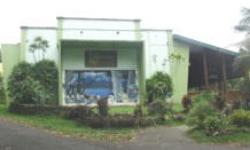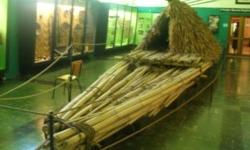Hello and welcome to the Fiji Museum, Suva, Fiji. Located in the heart of Suva's botanical gardens, the Fiji Museum holds a remarkable collection which includes archaeological material dating back 3,700 years and cultural objects representing both Fiji's indigenous inhabitants and other communities that have settled in the island group over the past 100 years.
The Museum is a statutory body governed by the Fiji Museum Act and the Preservation of Objects of Archaeological & Palaeontological Interest Act.
The idea for a Museum to display and preserve traditional Fijian culture was first discussed in 1904. Later that year Sir William Allardyce presented his collection to the Suva Town Board, and it was displayed in the Town Hall.
In 1908 the Fijian Society was formed with the specific aim of researching and preserving the country's history and culture. The formation of a Museum was included in this aim. In 1910 the government approved an annual grant of £25 to appoint a collection caretaker. With the passing of the Fiji Museum Ordinance in 1929, the Museum was formally inaugurated as a Government Statutory Body with a Board of Trustees. Local residents presented pieces and collections to the Town Board and artifacts were purchased by the Trustees. These contributed towards a growing collection which filled the Town Hall. The collection remained on display in the Town Hall until 1919 when a substantial part of the hall was destroyed by fire. The collection was moved to a variety of venues until the government was persuaded by the Trustees to build a National Museum.
The current Fiji Museum was opened in 1955 by the Governor of Fiji, Sir Ronald Garvey. This building was used to house the displays, reserve collection and provide storage. Today the building has two adjoining sections, the first constructed in 1972 and the second in 1978. Together, these buildings provide a history gallery, masi gallery, art gallery, Indo-Fijian gallery, temporary exhibition space, store rooms and gift shop. The archives, photographic studio, editing suite, library and administration offices are located in what was the Nawela Hostel for women, adjacent to the main Museum building.
For a long time the Museum served as a storehouse for cultural items and as a centre for an erudite minority. The majority of local people did not show much interest. In the 1960's a series of education and craft programmes was initiated by the newly appointed director, Bruce Palmer. However, a long-term injection of funds to maintain such programmes was not made.



Fiji Museum reviews
Login to comment